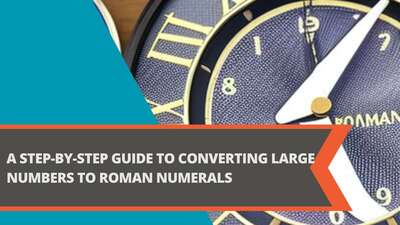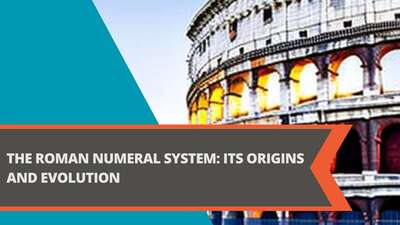A Comprehensive Guide to Converting Between Hexadecimal and Decimal
- What is Hexadecimal?
- What is Decimal?
- Converting from Hexadecimal to Decimal
- Converting from Decimal to Hexadecimal
- Tips and Tricks
- Frequently Asked Questions
- What is the difference between hexadecimal and decimal?
- Why is hexadecimal used in computer programming?
- What is the easiest way to convert between hexadecimal and decimal?
- Conclusion
Converting between hexadecimal and decimal can be a daunting task, but it is an essential skill for anyone working with computers or programming. In this guide, we will cover everything you need to know to convert between these two number systems. We will discuss what hexadecimal and decimal are, the process of conversion, and some tips and tricks to make the process easier. Let's get started!
What is Hexadecimal?
Hexadecimal is a base-16 number system that uses 16 digits to represent values. The digits used are 0-9 and A-F, where A-F represent values 10-15. In hexadecimal, each digit represents a power of 16, with the rightmost digit being the 16^0 place, the next digit to the left being the 16^1 place, and so on. For example, the hexadecimal number 3F7 can be expanded as:
- 3F7 = (3 x 16^2) + (15 x 16^1) + (7 x 16^0)
- 3F7 = (3 x 256) + (15 x 16) + (7 x 1)
- 3F7 = 1015 (in decimal)
Hexadecimal is commonly used in computer programming, where it is used to represent memory addresses, color codes, and other values.
What is Decimal?
Decimal is a base-10 number system that we use in our everyday lives. It has ten digits from 0 to 9, and each digit represents a value that is ten times greater than the previous digit. For example, the number 123 can be expanded as:
- 123 = (1 x 10^2) + (2 x 10^1) + (3 x 10^0)
- 123 = (1 x 100) + (2 x 10) + (3 x 1)
- 123 = 123 (in decimal)
Decimal is used in everyday calculations, such as money, time, and measurements.
Converting from Hexadecimal to Decimal
Converting from hexadecimal to decimal can be done by multiplying each digit by its corresponding power of 16 and adding the results. For example, to convert the hexadecimal number 3F7 to decimal, we can use the following steps:
- 3F7 = (3 x 16^2) + (15 x 16^1) + (7 x 16^0)
- 3F7 = (3 x 256) + (15 x 16) + (7 x 1)
- 3F7 = 1015 (in decimal)
Another way to think of this process is to use the powers of 16 as weights for each digit, with the rightmost digit being the lightest weight and the leftmost digit being the heaviest weight. Then, multiply each digit by its weight and add the results. For example:
- 3F7 = (7 x 1) + (15 x 16) + (3 x 256)
- 3F7 = 1015 (in decimal)
As you can see, both methods will yield the same result. Choose the one that is easiest for you to remember.
Converting from Decimal to Hexadecimal
Converting from decimal to hexadecimal can be done by repeatedly dividing the decimal number by 16 and writing down the remainder at each step. The remainders will form the hexadecimal digits, in reverse order. For example, to convert the decimal number 123 to hexadecimal, we can use the following steps:
- Divide 123 by 16: 123 ÷ 16 = 7 remainder 11 (B in hexadecimal)
- Divide 7 by 16: 7 ÷ 16 = 0 remainder 7 (7 in hexadecimal)
Therefore, 123 in decimal is equal to 7B in hexadecimal.
If the decimal number has a fractional part, you can convert it to hexadecimal by repeatedly multiplying it by 16 and writing down the integer part at each step, until you get a value of zero or reach the desired number of digits. The integer parts will form the hexadecimal digits, in order. For example, to convert the decimal number 0.6875 to hexadecimal:
- Multiply 0.6875 by 16: 0.6875 x 16 = 11 (B in hexadecimal)
- Multiply 0.0625 by 16: 0.0625 x 16 = 1 (1 in hexadecimal)
Therefore, 0.6875 in decimal is equal to 0.B1 in hexadecimal.
Tips and Tricks
Here are some tips and tricks to make converting between hexadecimal and decimal easier:
- Use a calculator or a conversion tool: There are many online calculators and conversion tools that can help you convert between hexadecimal and decimal quickly and accurately.
- Practice, practice, practice: The more you practice converting between these two number systems, the easier it will become. Start with simple numbers and work your way up to more complex ones.
- Break it down: When converting from hexadecimal to decimal, break the number down into its individual digits and multiply each one by its corresponding power of 16. When converting from decimal to hexadecimal, break the number down into integer and fractional parts and convert each part separately.
Frequently Asked Questions
What is the difference between hexadecimal and decimal?
Hexadecimal is a base-16 number system that uses 16 digits to represent values, while decimal is a base-10 number system that uses 10 digits to represent values. Hexadecimal is commonly used in computer programming, while decimal is used in everyday calculations.
Why is hexadecimal used in computer programming?
Hexadecimal is used in computer programming because it can represent binary values more compactly and is easier for humans to read and understand than binary. Each hexadecimal digit represents four binary digits (bits), so two hexadecimal digits can represent a byte (8 bits).
What is the easiest way to convert between hexadecimal and decimal?
The easiest way to convert between hexadecimal and decimal is to use an online calculator or conversion tool. However, if you want to do it manually, you can use the methods described in this article. The key is to understand the basic principles of each number system and to practice converting between them until it becomes second nature.







